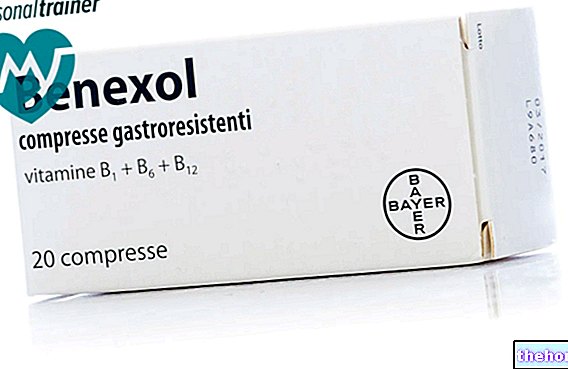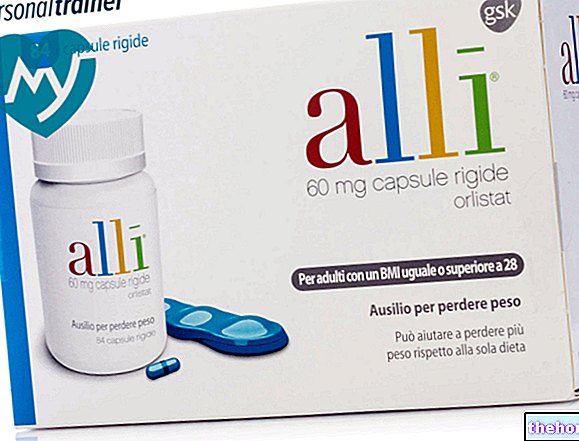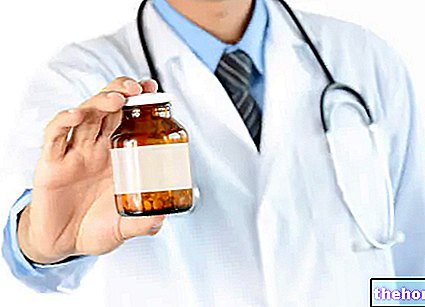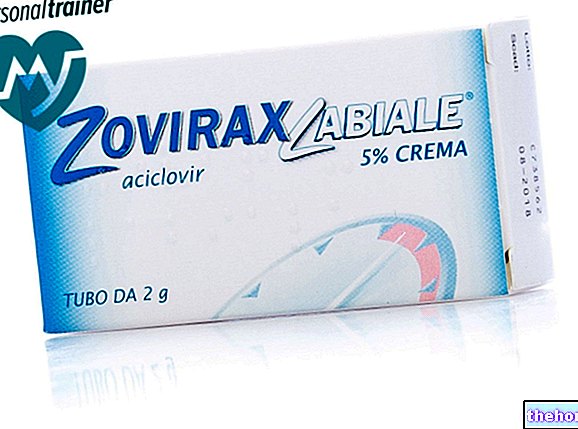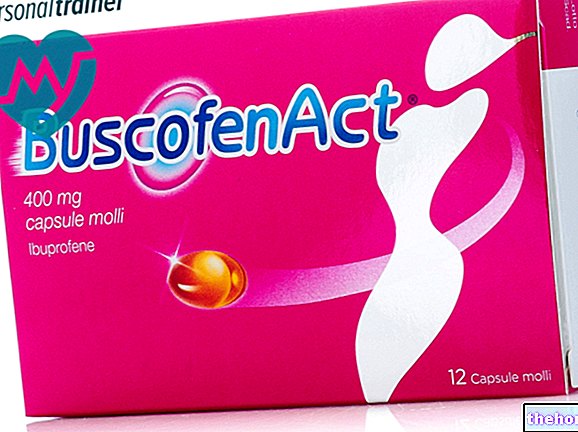Active ingredients: Exemestane
EXEMESTANE DOC Generici 25 mg film-coated tablets
Why is Exemestane used - Generic drug? What is it for?
Your medicine is called EXEMESTANE DOC Generici. EXEMESTANE DOC Generici belongs to a group of medicines called aromatase inhibitors. These medicines interfere with a substance called aromatase, which is needed to make the female hormone estrogen, especially in postmenopausal women. Reducing estrogen levels in the body is one way to treat hormone-dependent breast cancer.
EXEMESTANE DOC Generici is used to treat early stage hormone-dependent breast cancer in postmenopausal women after they have completed 2-3 years of tamoxifen treatment. It is also used to treat late-stage hormone-dependent breast cancer in postmenopausal women when a different hormone treatment hasn't worked well enough.
Contraindications When Exemestane should not be used - Generic drug
Do not take EXEMESTANE DOC Generici
- if you are allergic to the active substance or any of the other ingredients of this medicine (listed in section 6)
- if she has not yet gone through menopause, that is, she is still menstruating
- if you are pregnant, you may become pregnant or are breastfeeding.
Precautions for use What you need to know before taking Exemestane - Generic drug
Talk to your doctor or pharmacist before taking EXEMESTANE DOC Generici
- before treatment with Exemestane, your doctor may want to have a blood test to make sure you have reached menopause.
- before taking EXEMESTANE DOC Generici tell your doctor if you have liver or kidney problems
- if you have suffered or are suffering from any medical condition affecting the density of your bones. This is because medicines of this class reduce the levels of female hormones and this can lead to a loss of the mineral content of the bones, which can reduce their density. You may need to have your bone density measured before and during treatment. Your doctor may give you a medicine or vitamin D supplements to prevent or treat bone loss.
If you play sports: the use of the drug without therapeutic need constitutes doping and can in any case determine positive anti-doping tests.
Interactions Which drugs or foods may change the effect of Exemestane - Generic drug
Tell your doctor or pharmacist if you are taking, have recently taken or might take any other medicines.
EXEMESTANE DOC Generici should not be given at the same time as hormone replacement therapy (HRT). The following medicines should be used with caution when taking EXEMESTANE DOC Generici.
Tell your doctor if you are taking medicines such as:
- rifampicin (an antibiotic)
- carbamazepine or phenytoin (anti-convulsants used to treat epilepsy)
- the herbal remedy St. John's wort (Hypericum perforated) or preparations that contain it
Warnings It is important to know that:
Pregnancy, breastfeeding and fertility
Do not take Exemestane if you are pregnant or breastfeeding. Tell your doctor if you are pregnant or think you are pregnant.
If there is a possibility that you will become pregnant, decide on a contraceptive system with your doctor.
Driving and using machines
If you feel sleepy, dizzy or weak while taking Exemestane you should try not to drive or use machines.
Dose, Method and Time of Administration How to use Exemestane - Generic drug: Posology
Always take this medicine exactly as your doctor has told you. If in doubt, consult your doctor or pharmacist. Your doctor will tell you how to take EXEMESTANE DOC Generici and for how long.
Adults and the elderly
The usual dose is one 25 mg film-coated tablet per day. EXEMESTANE DOC Generici film-coated tablets should be taken by mouth after a meal at about the same time each day.
Use in children and adolescents
EXEMESTANE DOC Generici is not recommended for use in children and adolescents.
If you forget to take EXEMESTANE DOC Generici
If you forget to take your tablet at the usual time, take it as soon as you remember. If it is near time for your next dose, take the next tablet at the usual time. Do not take a double dose to make up for a forgotten dose.
If you stop taking EXEMESTANE DOC Generici
Do not stop taking your tablets even if you feel well, unless your doctor tells you to.
If you have any further questions on the use of this medicine, ask your doctor or pharmacist.
Overdose What to do if you have taken an overdose of Exemestane - Generic drug
If you accidentally take too many tablets, contact immediately or go to the nearest emergency room. Show this box of EXEMESTANE DOC Generici film-coated tablets.
Side Effects What are the side effects of Exemestane - Generic drug
Like all medicines, this medicine can cause side effects, although not everybody gets them. In general, Exemestane is well tolerated and the following side effects seen in patients treated with Exemestane are mainly mild or moderate in nature. Most side effects are associated with estrogen deficiency (e.g. hot flashes).
Very common side effects (affects more than 1 in 10 people)
- difficulty falling asleep
- migraine
- hot flashes
- feeling unwell
- increased sweating
- pain in muscles and joints (including osteoarthritis, back pain, arthritis and stiffness in the joints)
Common side effects (affects more than 1 in 100 people but less than 1 in 10 people)
- loss of appetite
- depression
- dizziness, carpal tunnel syndrome (a combination of pins and needles, numbness and pain affecting all fingers except the little finger)
- stomach pain, vomiting (feeling nauseous), constipation, indigestion, diarrhea
- skin rash, hair loss
- abnormal liver tests
- thinning of the bones which can lead to reduced density (osteoporosis), leading to fractures (breaks or cracks)
- pain, swollen hands and feet
Uncommon side effects (affects more than 1 in 1000 people but less than 1 in 100 people)
- drowsiness
- muscle weakness
- leukopenia (decrease in the number of white blood cells)
- increase in hepatic function parameters
- skin disorders (sudden eruption of pustules on the skin)
- hypersensitivity
- inflammation of the liver (hepatitis) may occur. Symptoms include generally feeling unwell, nausea, jaundice (yellowing of the skin and eyes), itching, pain in the right side of the abdomen and loss of appetite.
- blood, you may notice that there are changes in kidney function. Changes in the amount of certain blood cells (lymphocytes) and platelets (blood cells that cause clotting) circulating in the blood may occur, especially in patients with pre-existing lymphopenia (reduced lymphocytes in the blood).
Reporting of side effects
If you get any side effects, talk to your doctor or pharmacist. This includes any possible side effects not listed in this leaflet. You can also report side effects directly via the national reporting system at www.agenziafarmaco.gov.it/it/responsabili. By reporting side effects you can help provide more information on the safety of this medicine.
Expiry and Retention
This medicinal product does not require any special storage conditions.
Keep this medicine out of the sight and reach of children.
Do not use this medicine after the expiry date which is stated on the carton after "EXP". The expiry date refers to the last day of that month.
Do not throw any medicines via wastewater or household waste. Ask your pharmacist how to throw away medicines you no longer use. This will help protect the environment.
Deadline "> Other information
What EXEMESTANE DOC Generici contains
The active ingredient is exemestane.
Each film-coated tablet contains 25 mg of exemestane.
The other ingredients are:
- Tablet core Mannitol, copovidone, crospovidone, silicated microcrystalline cellulose, sodium starch glycolate (Type A), magnesium stearate
- Tablet coat: Hypromellose, macrogol 400, titanium dioxide
What EXEMESTANE DOC Generici looks like and contents of the pack
White to off-white, round, biconvex tablet debossed with "25" on one side and plain on the other.
EXEMESTANE DOC Generici is available in packs of 30 or 100 film-coated tablets (blisters of 10).
Source Package Leaflet: AIFA (Italian Medicines Agency). Content published in January 2016. The information present may not be up-to-date.
To have access to the most up-to-date version, it is advisable to access the AIFA (Italian Medicines Agency) website. Disclaimer and useful information.
01.0 NAME OF THE MEDICINAL PRODUCT -
EXEMESTANE DOC GENERICI 25 MG TABLETS COATED WITH FILM
02.0 QUALITATIVE AND QUANTITATIVE COMPOSITION -
Each film-coated tablet contains 25 mg of exemestane.
For the full list of excipients, see section 6.1.
03.0 PHARMACEUTICAL FORM -
Film-coated tablet.
White to off-white, round, biconvex, film-coated tablet with "25" debossed on one side and plain on the other.
04.0 CLINICAL INFORMATION -
04.1 Therapeutic indications -
EXEMESTANE DOC Generici is indicated for the adjuvant treatment of postmenopausal women with estrogen receptor positive invasive early breast cancer after initial adjuvant tamoxifen therapy for 2-3 years.
EXEMESTANE DOC Generici is indicated for the treatment of advanced breast cancer in women in a natural or induced postmenopausal state whose disease has progressed after treatment with anti-estrogen therapy.
Efficacy has not been demonstrated in patients with estrogen receptor negative.
04.2 Posology and method of administration -
Dosage
Adult and elderly patients
The recommended dose of EXEMESTANE DOC Generici is 1 tablet of 25 mg to be taken once daily after a meal.
In patients with early breast cancer, treatment with Exemestane should continue until completion of a sequential combined adjuvant hormone therapy (tamoxifen followed by Exemestane) for five years or shorter in the event of cancer recurrence.
In patients with advanced breast cancer, treatment with Exemestane should continue until cancer progression is evident.
No dosage adjustments are required for patients with hepatic or renal insufficiency (see section 5.2).
Pediatric population
Use in children and adolescents is not recommended.
04.3 Contraindications -
EXEMESTANE DOC Generici tablets are contraindicated in patients with known hypersensitivity to the active substance or to any of the excipients, in pre-menopausal women and in pregnant or breastfeeding women.
04.4 Special warnings and appropriate precautions for use -
Exemestane should not be given to women with pre-menopausal endocrine status. Therefore, if considered appropriate from a clinical point of view, the postmenopausal status should be verified by evaluating the levels of LH, FSH and estradiol.
EXEMESTANE DOC Generici should be used with caution in patients with impaired hepatic or renal function.
EXEMESTANE DOC Generici is a potent agent that reduces the level of estrogen, and a decrease in bone mineral density and an increase in the percentage of fractures have been observed following administration. At the start of adjuvant treatment with exemestane, women with osteoporosis or at risk of osteoporosis should undergo a bone mineral health assessment to support treatment, in accordance with current guidelines and practice. advanced bone mineral density (BMD) should be monitored on a case-by-case basis. Although adequate data are not available to show the effects of treatment for the reduction in bone mineral density caused by exemestane, patients treated with EXEMESTANE Generics should be closely monitored and treatment for, or prophylaxis of, osteoporosis initiated in patients at risk.
Routine assessment of 25-hydroxyvitamin D levels should be considered prior to initiation of treatment with an aromatase inhibitor, due to the high prevalence of severe deficiency in women with early breast cancer (EBC). Vitamin D deficiency must receive a vitamin D supplement.
04.5 Interactions with other medicinal products and other forms of interaction -
Studies conducted in vitro showed that the drug is metabolised by cytochrome P450 (CYP) 3A4 and aldoketoreductases and does not inhibit any of the major CYP isoenzymes. In a clinical pharmacokinetic study, the specific inhibition of CYP 3A4 by ketoconazole did not show significant effects on the pharmacokinetics of exemestane.
In an interaction study with rifampicin, a potent inducer of CYP450, given at a dose of 600 mg / day, and a single dose of 25 mg of exemestane, the AUC of exemestane was reduced by 54% and Cmax by 41. %. As the clinical relevance of this interaction has not been evaluated, concomitant administration of drugs such as rifampicin, anticonvulsants (e.g. phenytoin and carbamazepine) and herbal preparations containing hypericum perforatum (St. John's wort), known to induce CYP3A4, may reduce the effectiveness of EXEMESTANE DOC Generici.
EXEMESTANE DOC Generici should be used with caution with drugs which are metabolised via the CYP3A4 pathway and which have a narrow therapeutic window. There is no clinical experience with the concomitant use of EXEMESTANE DOC Generici with other anticancer drugs.
EXEMESTANE DOC Generici should not be administered concomitantly with estrogen-containing medicines as these would nullify its pharmacological action.
04.6 Pregnancy and breastfeeding -
Pregnancy
No clinical data are available on pregnant women exposed to exemestane. Animal studies have shown toxic effects on reproduction. Therefore, EXEMESTANE DOC Generici is contraindicated in pregnancy.
Feeding time
It is not known whether exemestane is excreted in human milk. EXEMESTANE DOC Generici should not be administered during lactation.
Peri-menopausal women or women who could become pregnant
Doctors may need to discuss the need for adequate contraception with women who may become pregnant, including women who are peri-menopausal or who have recently entered menopause, until their postmenopausal status has been completely defined (see sections 4.3 Contraindications and 4.4 Special warnings and precautions for use).
04.7 Effects on ability to drive and use machines -
Following the use of the drug, cases of drowsiness, drowsiness, asthenia and dizziness have been reported. Patients should be informed that, if such effects occur, their physical and / or mental abilities required for driving vehicles or for use. machinery can be altered.
04.8 Undesirable effects -
Exemestane was generally well tolerated in all clinical studies conducted with exemestane at the standard dose of 25 mg / day and undesirable effects generally were mild to moderate in severity.
The incidence of treatment discontinuation due to adverse events was 7.4% in patients with early breast cancer receiving adjuvant treatment with exemestane after initial adjuvant tamoxifen therapy.
The most frequently reported adverse reactions were hot flashes (22%), arthralgia (18%) and fatigue (16%).
The incidence of treatment discontinuation due to adverse events was 2.8% in the entire advanced breast cancer patient population. The most common adverse reactions were hot flashes (14%) and nausea (12 %).
Most adverse reactions can be attributed to the normal pharmacological consequences of estrogen deprivation (eg hot flashes).
Adverse reactions reported are derived from clinical studies and post-marketing experience and are listed below by system organ class and frequency.
Frequencies are defined as: very common (≥1 / 10), common (≥1 / 100 to
Disorders of the blood and lymphatic system
Uncommon: leukopenia (**)
Rare: thrombocytopenia (**)
Not known: reduced lymphocyte count (**)
Disorders of the immune system
Uncommon: hypersensitivity
Metabolism and nutrition disorders
Common: anorexia
Psychiatric disorders
Very common: insomnia
Common: depression
Nervous system disorders
Very common: headache
Common: dizziness, carpal tunnel syndrome, paraesthesia
Uncommon: somnolence
Vascular pathologies
Very common: hot flashes
Gastrointestinal disorders
Very common: nausea
Common: abdominal pain, vomiting, constipation, dyspepsia, diarrhea
Hepatobiliary disorders
Uncommon: hepatitis (†), cholestatic hepatitis (†), elevated liver enzymes (†), elevated blood bilirubin (†), elevated blood alkaline phosphatase (†)
Skin and subcutaneous tissue disorders
Very common: increased sweating
Common: rash, alopecia, urticaria, pruritus
Uncommon: acute generalized exanthematous pustulosis (†)
Musculoskeletal and connective tissue disorders
Very common: musculoskeletal and joint pain (*)
Common: osteoporosis, fracture
General disorders and administration site conditions
Very common: tiredness
Common: pain, peripheral edema
Uncommon: asthenia
(*) Includes: arthralgia and, less frequently, pain in extremity, osteoarthritis, back pain, arthritis, myalgia and joint stiffness.
(**) Thrombocytopenia and leukopenia have been reported rarely in patients with advanced breast cancer. & EGRAVE; An occasional decrease in lymphocytes was observed in approximately 20% of patients taking exemestane, particularly in patients with pre-existing lymphopenia; however, the mean lymphocyte values in these patients did not change significantly over time and a corresponding increase in viral infections was not observed. These effects were not seen in patients treated in early breast cancer studies.
(†) Frequency calculated with the 3 / X rule
The table below shows the frequency of adverse events and diseases specified above in the early stage breast cancer (IES) study, regardless of causality, reported in patients receiving study drug and up to 30 days after the end of therapy.
In the IES study, the frequency of cardiac ischemic events was 4.5% vs 4.2% in patients treated with exemestane and tamoxifen, respectively. No significant difference was observed for individual cardiovascular events including hypertension (9.9% vs 8.4%), myocardial infarction (0.6% vs 0.2%) and heart failure (1.1% vs 0. , 7%).
In the IES study, a higher frequency of hypercholesterolemia was found compared to tamoxifen (3.7% vs
In a randomized, double-blind study of postmenopausal women with low-risk early breast cancer treated with exemestane (N = 73) or placebo (N = 73) for 24 months, exemestane was was associated with an average reduction in plasma HDL-cholesterol of 7-9% compared to a 1% increase with placebo. There was also a reduction in apolipoprotein A1 of 5-6% in the exemestane group compared to 0- 2% of the placebo. The effect on the other lipid parameters evaluated (total cholesterol, LDL cholesterol, triglycerides, apolipoprotein-B and lipoprotein-a) was very similar in the two treatment groups. The clinical significance of these results is unclear.
In the IES study, a higher frequency of gastric ulcer was found in the exemestane arm compared to the tamoxifen arm (0.7% vs gastric ulcer were on concomitant non-steroidal anti-inflammatory agents and / or had a previous medical history.
Adverse reactions based on post-marketing experience
Hepatobiliary disorders: hepatitis, cholestatic hepatitis
Since the reactions were reported voluntarily through a population of undefined size, it was not always possible to reliably estimate their frequency or establish a causal relationship with drug exposure.
Reporting of suspected adverse reactions
Reporting of suspected adverse reactions occurring after authorization of the medicinal product is important as it allows continuous monitoring of the benefit / risk balance of the medicinal product. Healthcare professionals are asked to report any suspected adverse reactions via the national reporting system. "address www.agenziafarmaco.gov.it/it/responsabili.
04.9 Overdose -
Clinical studies were performed with the administration of exemestane up to a dose of 800 mg as a single dose to healthy female volunteers and up to a dose of 600 mg per day to postmenopausal women with advanced breast cancer; these dosages were well tolerated.
It is not known what single dose of exemestane could cause the patient's life-threatening symptoms. In rats and dogs, lethality was observed after administration of single oral doses equivalent to 2,000 and 4,000 times the recommended human dose, respectively, calculated on the basis of mg / m². There is no specific antidote to overdose and treatment should be symptomatic.
General supportive care is indicated, including frequent monitoring of vital signs and close observation of the patient.
05.0 PHARMACOLOGICAL PROPERTIES -
05.1 "Pharmacodynamic properties -
Pharmacotherapeutic group: hormone antagonists and related agents, enzyme inhibitors.
ATC code: L02BG06.
Exemestane is an irreversible steroidal aromatase inhibitor, structurally related to the natural substrate androstenedione. In postmenopausal women, estrogen is mainly produced by the conversion of androgens to estrogen via the aromatase enzyme in peripheral tissues. Estrogen deprivation through aromatase inhibition is an effective and selective treatment for hormone-dependent breast cancer. in postmenopausal women. In postmenopausal women, exemestane administered orally significantly reduces serum estrogen concentrations starting from a dose of 5 mg, reaching maximum suppression (> 90%) with a dose of 10-25 mg. In postmenopausal breast cancer patients treated with the daily dose of 25 mg, the body's aromatase activity is reduced by 98%.
Exemestane does not possess any progestogenic or estrogenic properties. A slight androgenic activity has been observed probably due to the 17-hydro derivative, especially at high doses. In studies conducted with multiple daily doses, exemestane has shown no detectable effects on the adrenal biosynthesis of cortisol or aldosterone, measured before or after the stimulus with ACTH, thus demonstrating its selectivity with regard to the other enzymes involved in the synthesis of steroids.
Therefore, glucocorticoid or mineralocorticoid replacement therapy is not necessary. A slight non-dose-dependent increase in serum levels of LH and FSH has also been observed at low doses: however, this effect is expected given the pharmacological class and is probably the result of feedback at the pituitary level due to the reduction of estrogen levels that stimulate the pituitary secretion of gonadotropins even in postmenopausal women.
Treatment of early stage breast cancer
In a multicenter, randomized, double-blind study of 4,724 postmenopausal patients with estrogen receptor positive or unknown primary breast cancer, patients free of the disease following adjuvant tamoxifen therapy for 2- 3 years were randomized to a subsequent 3-2 year treatment with exemestane (25 mg / day) or tamoxifen (20 or 30 mg / day) to complete a total 5-year course of hormone therapy.
After an average duration of therapy of approximately 30 months and a median follow-up of approximately 52 months, the results showed that sequential treatment with exemestane after 2-3 years of adjuvant tamoxifen therapy was associated with an improvement. clinically and statistically significant for disease-free survival (DFS) compared with continued tamoxifen therapy.The analysis performed showed that over the study period exemestane reduced the risk of breast cancer recurrence by 24% compared to tamoxifen (Hazard Ratio 0.76, p = 0.00015).
The beneficial effect of exemestane over tamoxifen with respect to disease-free survival (DFS) was evident regardless of nodal involvement or previous chemotherapy.
Furthermore, exemestane significantly reduced the risk of contralateral breast cancer (Hazard Ratio 0.57, p = 0.04158).
In the whole study population, a trend towards better overall survival was observed for exemestane (222 deaths) compared to tamoxifen (262 deaths) with a hazard ratio of 0.85 (log-rank test: p = 0 , 07362), which represents a 15% reduction in the risk of death in favor of exemestane. A statistically significant 23% reduction in the risk of death was observed (hazard ratio for overall survival equal to 0.77; Wald chi square test: p = 0.0069) for exemestane versus tamoxifen when corrected for predetermined prognostic factors (ER, lymph nodes, previous chemotherapy, HRT and bisphosphonate use). The main efficacy results in all patients (intention to treat population) and in patients with estrogen receptor positive are summarized in the table below:
* Log-rank test; ER + patients = estrogen receptor positive patients;
Disease-free survival is defined as the first occurrence of local recurrence or distant metastasis, contralateral breast cancer, or death from any cause;
b Breast cancer free survival is defined as the first occurrence of local recurrence or distant metastasis, contralateral breast cancer, or breast cancer death;
c Distant metastasis-free survival is defined as the first occurrence of distant metastasis or death from breast cancer;
d Overall survival is defined as the occurrence of death from any cause.
In the further analysis of the subgroup of patients with positive or unknown estrogen receptors, the uncorrected hazard ratio for overall survival was 0.83 (log-rank test: p = 0.04250), which represents a reduction clinically and statistically significant risk of death by 17%.
Results from a bone substudy showed that a moderate decrease in bone mineral density is observed in women treated with exemestane after 2-3 years of tamoxifen therapy. In the overall study, the incidence of on-treatment fractures evaluated over 30 months of treatment was higher in patients treated with exemestane than in those treated with tamoxifen (4.5% and 3.3% respectively, p = 0.038 ).
Results from an endometrial substudy indicate that after 2 years of treatment there was a median reduction in endometrial thickness of 33% in patients treated with exemestane compared with an undetectable change in patients treated with tamoxifen. "endometrial thickening, detected at the start of treatment, has normalized (
Treatment of advanced breast cancer
In a randomized controlled clinical trial validated by a review committee, exemestane, administered at a daily dose of 25 mg, statistically significantly prolongs survival, Time to Progression (TTP), Time to Relapse. (TTF) when compared to standard hormone treatment with megestrol acetate in postmenopausal patients with advanced breast cancer who had progressed after or during treatment with tamoxifen given as adjuvant or first-line treatment for the disease at an advanced stage.
05.2 "Pharmacokinetic properties -
Absorption:
Following oral administration of exemestane tablets, exemestane is rapidly absorbed. The fraction of the dose absorbed via the gastrointestinal tract is high. Absolute bioavailability in humans is unknown, although limited by an extensive hepatic first pass effect. A similar effect resulted in an absolute bioavailability of 5% in rats and dogs. After a single dose of 25 mg, maximum plasma levels of 18 ng / ml were reached after 2 hours. Concomitant food intake increases bioavailability by 40%.
Distribution:
The volume of distribution of exemestane, uncorrected for oral bioavailability, is approximately 20,000 L. The kinetics are linear and the terminal elimination half-life is 24 hours. Plasma protein binding is 90% and is independent of concentration. Exemestane and its metabolites do not bind to erythrocytes.
After repeated administration, there is no accumulation of exemestane in unexpected ways.
Metabolism and excretion:
Exemestane is metabolized by oxidation of the methylene group in position 6 by the isoenzyme CYP3A4 and / or reduction of the 17-keto group by aldoketoreductase followed by conjugation. The clearance of exemestane, not corrected for oral bioavailability, is about 500 L / hour.
The metabolites are either inactive or less active than the parent drug in inhibiting aromatase.
The amount of unchanged drug excreted in the urine is 1% of the dose. In faeces and urine, equal amounts (40%) of C14-labeled exemestane were excreted within one week.
Particular patient populations
Age: No significant correlation was observed between the systemic exposure of exemestane and the age of the subjects.
Kidney failure:
In patients with severe renal impairment (CLcr
In view of the safety profile of exemestane, no dosage adjustment is considered necessary.
Liver failure:
In patients with moderate to severe hepatic impairment, the exposure of exemestane is 2-3 times higher than that seen in healthy volunteers.
In view of the safety profile of exemestane, no dosage adjustment is considered necessary.
05.3 Preclinical safety data -
Toxicological Studies: The results of repeated dose toxicity studies in rats and dogs, such as effects on reproductive and related organs, were generally attributable to the pharmacological activity of exemestane. Other toxicological effects (on the liver, kidney or central nervous system) were observed only at exposures considered sufficiently in excess of the maximum human exposure, indicating little relevance for clinical use.
Mutagenicity: Exemestane was not genotoxic in bacteria (Ames test), Chinese hamster V79 cells, rat hepatocytes and the mouse micronucleus test. in vitro exemestane is clastogenic in lymphocytes, it was not clastogenic in two studies in vivo.
Reproductive toxicology: Exemestane was embryotoxic in rats and rabbits at systemic exposure levels similar to those obtained in humans at the dose of 25 mg / day. There was no evidence of teratogenicity.
Carcinogenicity: In a two-year carcinogenicity study in female rats, no treatment-related tumors were observed. In male rats, the study ended after 92 weeks, due to their premature death from chronic kidney disease. In a two-year carcinogenicity study in mice, an increased incidence of hepatic neoplasms in both sexes was observed at intermediate and high doses (150 and 450 mg / kg / day). This finding is considered to be related to the induction of microsomal liver enzymes, an effect observed in mice but not in clinical studies. An increased incidence of renal tubule adenomas was also noted in male mice at high doses (450 mg / kg / day). This change is considered species- and sex-specific and occurred at a dose representing 63 times the drug exposure in humans. None of the observed effects are considered clinically related to exemestane treatment.
06.0 PHARMACEUTICAL INFORMATION -
06.1 Excipients -
Core of the tablet:
Mannitol (E421)
Copovidone
Crospovidone
Silicified microcrystalline cellulose
Sodium Starch Glycolate (Type A)
Magnesium Stearate (E470b)
Tablet coating:
Hypromellose (E464)
Macrogol 400
Titanium Dioxide (E171)
06.2 Incompatibility "-
Not relevant.
06.3 Period of validity "-
3 years
06.4 Special precautions for storage -
This medicinal product does not require any special storage conditions.
06.5 Nature of the immediate packaging and contents of the package -
PVC / PVDC / Aluminum blisters - pack of 30 or 100 film-coated tablets
06.6 Instructions for use and handling -
Any unused product or waste must be disposed of in accordance with local regulations.
07.0 HOLDER OF THE "MARKETING AUTHORIZATION" -
DOC Generici S.r.l
Via Turati 40
20121 Milan
08.0 MARKETING AUTHORIZATION NUMBER -
EXEMESTANE DOC Generici 25 mg film-coated tablets - 30 tablets - AIC 039850019
09.0 DATE OF FIRST AUTHORIZATION OR RENEWAL OF THE AUTHORIZATION -
April 2011
10.0 DATE OF REVISION OF THE TEXT -
May 2014

